
Peanuts are popular nuts that come in various shapes, forms, and textures. Peanuts are good in salads, as butter, and as a snack. I spoke with a friend a while back about different types of allergies. Peanut allergy is common among humans, but I have never heard about any animal developing a peanut allergy. Perhaps I’ve been blessed with animals without allergies.
Ducks can eat peanuts, and they like it. However, you will need to remove them out of their shells and grind them first. Due to the high amount of fat in peanuts, it’s vital to feed in moderation since ducks can easily gain weight. Peanuts are high in protein and valuable vitamins the duck need.
Ducks require protein in their daily diet, and peanuts are an excellent source for that. Peanuts contain 26% protein, 49% fat, and 16% carbohydrates. Potassium is paramount in a duck’s diet, and with 705mg per 100 grams, it’s superior to many other foods. Due to the high amount of fat in peanuts, you will need to feed them in moderation. Peanuts are 567 calories per 100 grams and are more than a third of the duck’s daily calorie budget.
🥜 The peanuts need to be both roasted and unsalted before feeding them to your ducks.
Can ducks eat peanuts?
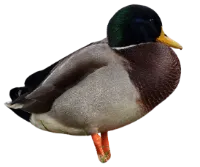
Ducks can eat peanuts, and it’s perfect for mixing with other foods. Adding a peanut spread helps the ducks to eat other foods they don’t like as much. (For example, asparagus). It’s important not to feed the ducks’ shells since they don’t provide any nutritional value, crushing or grinding them. However, it’s crucial to roast them first and never use salted peanuts.
The easiest way to feed peanuts to ducks is to grind them in a food processor first and give them an occasional spoon of peanut paste once in a while with other foods. A guide on how to grind peanuts to ducks can be seen below.

Can ducklings eat peanuts?

Ducklings can eat peanuts, and it’s perfect for them. However, ducklings shouldn’t eat anything else than duckling feed within their first four weeks. You can add peanuts to their diet gradually after the four weeks have passed. The protein amount is perfect for growing ducks and will help them develop strong bones and a healthy diet. However, it’s still important with portion control, and you shouldn’t overfeed them peanuts. Overweight ducklings can suffer from deformities if their bones don’t manage to carry the extra weight. Feed peanuts in moderation, occasionally.
Table of nutrients for 100 grams of dried peanuts and roasted peanuts
| Nutrient (unit) | Dried peanuts | Roasted peanuts |
| Weight standard (g) | 100 | 100 |
| Energy (kcal) | 586 | 605 |
| Energy (kJ) | 2454 | 2530 |
| Carbohydrates (g) | 8.2 | 9.3 |
| Fat (g) | 49 | 51.3 |
| Protein (g) | 25.7 | 22.39 |
| Fiber (g) | 8.1 | 11.6 |
| Water (g) | 6.7 | 1.74 |
| Alcohol (g) | 0 | 0 |
| Ashes (g) | 2.3 | 3.72 |
| Monosaccharides (g) | 1.1 | 0 |
| Disaccharides (g) | 2 | 4.64 |
| Sucrose (g) | 2 | 4.64 |
| Sugars (g) | 3.1 | 4.6 |
| Total saturated fatty acids (g) | 6.8 | 6.44 |
| Fatty acid 4: 0-10: 0 (g) | 0 | 0 |
| Lauric acid C12: 0 (g) | 0 | 0 |
| Myristic acid C14: 0 (g) | 0.23 | 0 |
| Palmitic acid C16: 0 (g) | 5.14 | 3.15 |
| Stearic acid C18: 0 (g) | 1.12 | 0.98 |
| Arachidic acid C20: 0 (g) | 0 | 0.49 |
| Total monounsaturated fatty acids (g) | 24.5 | 37.37 |
| Palmitic acid C16: 1 (g) | 0 | 0 |
| Oleic acid C18: 1 (g) | 23.7 | 36.29 |
| Total polyunsaturated fatty acids (g) | 15.5 | 5.1 |
| Linoleic acid C18: 2 (g) | 15.5 | 5.1 |
| Linolenic acid C18: 3 (g) | 0 | 0 |
| Arachidonic acid C20: 4 (g) | 0 | 0 |
| EPA (C20:5) (g) | 0 | 0 |
| DPA (C22:5) (g) | 0 | 0 |
| DHA (C22:6) (g) | 0 | 0 |
| Tiamin (mg) | 0.66 | 1.96 |
| Riboflavin (mg) | 0.13 | 0.11 |
| Vitamin C (mg) | 0 | 0 |
| Niacin (mg) | 14.2 | 15.1 |
| Niacin equivalents (NE / mg) | 18.48 | 18.8 |
| Vitamin B6 (mg) | 0.3 | 0.52 |
| Vitamin B12 (µg) | 0 | 0 |
| Folate (µg) | 101 | 115 |
| Retinol (µg) | 0 | 0 |
| Vitamin A (RE/µg) | 0 | 1.2 |
| β-Karoten (µg) | 0 | 11 |
| Vitamin D (µg) | 0 | 0 |
| Vitamin E (mg) | 9.1 | 6.58 |
| Vitamin K (µg) | 0 | 0 |
| Phosphorus (mg) | 385 | 382 |
| Iodine (µg) | 0 | 0 |
| Iron (mg) | 3.2 | 1.51 |
| Calcium (mg) | 58 | 61 |
| Potassium (mg) | 720 | 651 |
| Magnesium (mg) | 180 | 171 |
| Sodium (mg) | 16 | 15 |
| Salt (g) | 0.04 | 0.04 |
| Selenium (µg) | 2 | 0.02 |
| Zinc (mg) | 3.1 | 2.56 |
| Cholesterol (mg) | 0 | 0 |
| Whole grains total (g) | 0 | 0 |
| Waste (shell etc.) (%) | 27 | 0 |
Do ducks like to eat peanuts?
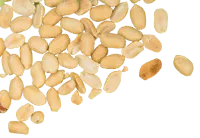
Peanuts and peanut spreads are some of the duck’s favorite treats. The sweet taste combined with the easy-to-eat texture in spreads makes it hard to love. There are, however, cases where ducks rejected the peanuts due to their size. It’s important to remove the peanuts from their shells and either grind or crush them before feeding. Otherwise, there’s a risk of suffocation.
Can ducks eat raw peanuts?

It would be best if you didn’t give raw peanuts to ducks. You will need to either buy already roasted and unsalted peanuts out of their shells or roast them yourself. Raw peanuts contain lectin, which shouldn’t be given to ducks. The lectin is being removed when you roast them.
Can ducks eat cooked peanuts?
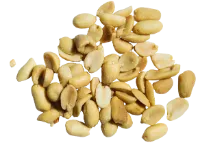
Ducks should only consume peanuts that have been roasted. You can roast them in your oven, microwave, or in a pan. There’s no need to use any oils, butter, or spices since peanuts already contain much fat. You know when the peanuts are ready when you can notice the smell of popcorn.
🥗 Ducks need a lot of different foods in their diet. Vegetables are an excellent source of nutrients. Learn more about what vegetables ducks can eat here.
Can ducks eat moldy peanuts?

You should never moldy food to any animal. Mold is toxic and can be lethal. For peanuts and other foods like corn, fodders, and other starters that have been sitting out for long may contain the mycotoxin called Aflatoxin. If the ducks are exposed, they can suffer from liver damage, tumors, gastrointestinal dysfunction, reduced productivity, congenital disabilities, and a suppressed immune system. (Source)
Can ducks eat peanut butter?
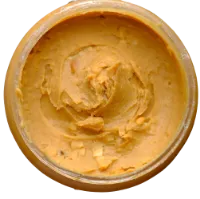
Ducks can not eat the peanut butter you buy in the stores due to added sugar, oils, sodium, spices, and preservatives. However, you can make your own peanut spread for ducks which is an excellent substitute, as long it is served in moderation and made using unsalted peanuts.
🍒 Fruits is a perfect energy booster, and ducks will greatly appreciate the sweet taste. Do you know what fruits ducks can eat and which they can’t?
Can ducks eat peanut pie?
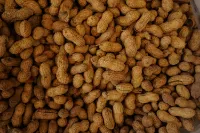
It would be best if you didn’t feed ducks peanut pie or any other pies. A typical peanut pie recipe consists of all-purpose flour, salt, butter, sugar, syrup, eggs, salted peanuts, and whipped cream – everything a duck shouldn’t eat.
Can ducks eat boiled canned peanuts?
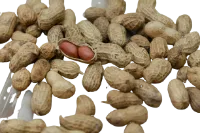
Boiled peanuts are a beloved snack in the southern United States, and if you aren’t aware of them-they are boiled green peanuts, still in the shell. One might argue for the health benefits of eating these peanuts, as well as they are boiled. Since the peanuts are in their shell, packed with sodium, and preservatives they aren’t good for ducks to eat.
🌿 Do you have bushes around and wonder what plants and herbs ducks can eat? Learn more here.
How do you cut peanuts for ducks?

Peanuts are usually not cut, but instead, you can use a food processor. However, first, you will need to remove the shells from the peanuts. I recently learned a trick on how you can roast the peanuts and remove the shells simultaneously. Video below.
The peanuts need to be crushed or ground before feeding them to your ducks. I usually add them to a food processer and let them spin for a minute. After a while, I have a creamy spread which I store in glass jars.
🥜 Peanuts provide many good nutrients like potassium, magnesium, folate, vitamin e, copper, and arginine. Ducks can eat a lot of nuts. Do you know what nuts to give ducks?
Safe ways to feed peanuts to ducks

Since peanuts shouldn’t be a daily staple in the duck’s diet and only should be given in moderation, there is a limit on how many ways you can feed ducks peanuts safely. The consensus among duck owners is to feed ducks a maximum of 2 peanuts per duck and day. However, since they have a pretty high caloric amount, I usually treat my ducks once a week. I use this food processor to make a spread and mix in a spoonful with their regular food. That way, they get their weekly dose and can enjoy their regular duckling pellets with a twist.
Below is a way of making a peanut spread without oil. In the recipe, they are using syrup and salt. Do not add this if you are planning on giving your ducks some.
Another way of feeding peanuts to ducks is to crush the peanuts and add them to their feed. Make sure you keep their daily limit of two.
A third way is to add the crushed nuts to a bucket of water. Ducks prefer to eat their food in water since it helps them ingesting it. However, please don’t throw the nuts into the water they swim in. Use a bucket or similar instead. If you throw food in their pond or lake, used for swimming, the risk of algae growth increases. If algae growth increases, the risk of disrupting the ecosystem below the surface increases, leading to the destruction of biodiversity.
🐀 Ducks need duck pellets in their diet, but do you know that they can also eat other animal fodder? Learn more about what fodders ducks can eat here.
Unsafe ways to feed peanuts to ducks
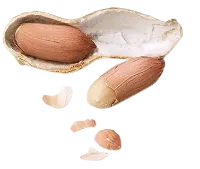
It’s both easy and human to do wrong sometimes. Coming to peanuts and feeding them to ducks – it’s almost mandatory to do some things wrong. The best thing about doing wrong is that you learn from it and can go forward.
Below are five ways to avoid when feeding peanuts to ducks.
1. Feeding too much much peanuts to the ducks
Feeding too many peanuts is both easy to do as well as correct. It’s easy to get carried away when you’re picking handfuls of peanuts out of the jar and throwing them out. Seeing happy ducks running around and eating doesn’t help. I know, I’ve done this. This is fine to do with other foods, like oats, peas, or even berries. Peanuts are too high in calories and fats. Ducks can easily gain weight, and eating a lot of peanuts doesn’t prevent that. Make sure to try to stick to a maximum of 2 per day for each of your ducks.
2. Feeding the shells to the ducks
When feeding peanuts to ducks, there are some things you will need to be aware of. The peanuts need to be small enough for the duck to be able to eat them. They also need to be roasted. If you are feeding peanuts with their shells to ducks, you are not doing them any favors. The shells don’t provide much nutrition except for some fibers they will have a hard time digesting. Peanuts with shells are too big for the duck’s mouth and will increase the risk of suffocation.
3. Feeding salted peanuts to ducks
When you feed ducks peanuts, one of the most important things is t give them unsalted peanuts. The amount of sodium they consume from salted peanuts is extremely high. Eating too high of sodium is not good for their organs and may cause dehydration and kidney and liver problems.
4. Feeding unroasted peanuts to ducks
Peanuts that aren’t roasted contain a protein called lectin. The lectin breaks down gradually when it reaches a certain heat. Lectin is toxic to ducks and causes them to have problems absorbing other nutrients, like calcium and potassium. However, it’s more efficient to reduce the number of peanuts given to ducks. (Source).
5. Feeding moldy peanuts to ducks
You should never moldy food to any animal. Mold is toxic and can be lethal. For peanuts and other foods like corn, fodders, and other starters that have been sitting out for long may contain the mycotoxin called Aflatoxin. If the ducks are exposed, they can suffer from liver damage, tumors, gastrointestinal dysfunction, reduced productivity, congenital disabilities, and a suppressed immune system.
🍽 Leftovers? Ducks can eat much of the same foods humans can eat. Do you want to know more? Read more about what human foods ducks can eat here.
What can you feed instead of peanuts to ducks?

There are some great foods you can feed ducks instead of peanuts.
If you would like to treat ducks with something that doesn’t require any preparation on your part, I suggest either blueberries, raspberries, corn, grapes, raisins, and green peas.
If you don’t mind a bit of cutting, I recommend you chop bananas, celery, strawberries, and cucumbers.
The third option, if you don’t mind some preparation and perhaps some cooking, you might try pumpkin, mushrooms, rice, and asparagus.
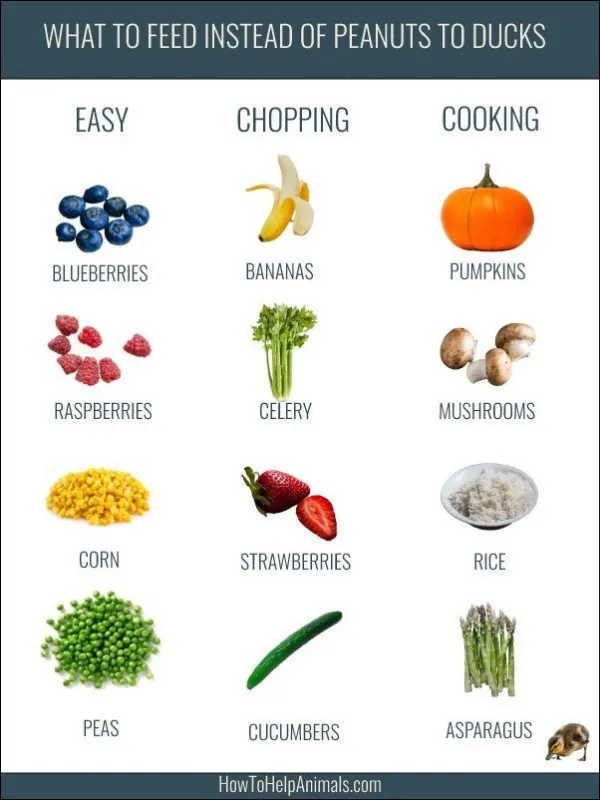
Blueberries
You can give blueberries to ducks without doing any preparations. The only thing to be aware of is to never feed frozen blueberries. Let them defrost in the fridge before feeding. Read more about feeding blueberries to ducks here.
Raspberries
Raspberries are an excellent treat for your ducks and can be given daily. Raspberries carry thiamine, riboflavin, vitamin B6, calcium, and zinc and are low in calories. Make sure to not feed too much since the water content is pretty high. Read more about feeding raspberries to ducks here.
Corn
Corn is high on the duck’s favorite foods. Corn is an inexpensive way to treat your ducks and provides a lot of vitamins and minerals. However, never feed kettle corn or popcorn. Read more about feeding corn to ducks here.
Peas
Peas are the favorite for many ducks worldwide. Peas are an excellent way to provide your ducks with nutrition and giving them a treat. Peas are a great food to have as a staple in your duck’s diet. Read more about feeding peas to ducks here.
Bananas
Bananas are high in potassium which is paramount in the duck’s diet. It’s, however, crucial to cut the banana into smaller pieces to decrease the risk of the ducks choking. If you cut the peel into smaller pieces, they are even able to eat that as well. Not the hard part. Read more about feeding bananas to ducks here.
Celery
Celery is a perfect food for both ducks and humans. You still need to cook it since it otherwise becomes a choking hazard. Read more about feeding celery to ducks here.
Strawberries
Ducks really love strawberries. Strawberries are very healthy and carry a lot of antioxidants. It’s important to chop the strawberries before feeding. You don’t need to throw away the tops. The ducks happily eat them too. Read more about feeding strawberries to ducks here.
Cucumbers
Despite not being very nutritious and mostly contain water-ducks really like it. It’s very easy to serve ducks, but it’s important to cut the cucumber thoroughly to decrease the risk of choking. Read more about feeding cucumbers to ducks here.
Pumpkins
Pumpkins are excellent for giving ducks. Pumpkins are extremely nutritious and beneficial for ducks. For best practice, you will need to cook it first. Read more about feeding pumpkins to ducks here.
Mushrooms
Mushrooms are a great addition to your duck’s diet. It’s best to cook the mushrooms first to remove the liquid, making them smaller and less stiff. Read more about feeding mushrooms to ducks here.
Rice
Cooked rice is excellent for ducks to eat. Since it’s quite caloric dense, you will need to feed in moderation. You can give uncooked rice to ducks as well as cooked. Read more about feeding rice and sushi to ducks here.
Asparagus
Asparagus is an underappreciated vegetable that carries a lot of vitamins and minerals beneficial for the duck. The green stiff vegetable isn’t liked by ducks raw and is much better for them cooked. Read more about feeding asparagus to ducks here.
🐛 Ducks actually eat other animals. They eat almost any small animal they can find. Do you want to learn more about what other animals ducks eat?
Health benefits from eating peanuts for ducks

Despite being a high-caloric food, peanuts do provides some benefits in the form av nutrition. Peanuts are a good source of potassium, magnesium, folate, vitamin e, copper, and arginine.
Potassium in peanuts for ducks
Potassium is paramount in a duck’s diet, as well as Calcium. Potassium’s role in the body is the regulate the fluid balance and help different cells. For example, nerve cells or muscle cells. Examples of foods rich in potassium ducks can eat bananas, broccoli, brussels sprouts, peas, lentils, nuts, potatoes, and tomatoes.
Magnesium in peanuts for ducks
A magnesium deficiency may lead to hypertension, insulin resistance, heart disease, and headaches. Magnesium can benefit strong bones, the activation of vitamin d, and provides a more restful sleep. Foods rich in magnesium ducks can eat nuts, beans, okra, tuna, and bananas.
Folate in peanuts for ducks
Folate is mandatory in a duck’s body. It’s essential for the brain and nerve function, digestion, proper cell function, and many more processes. Examples of foods rich in folate ducks can eat corn, peas, broccoli, pasta, asparagus, sunflower seeds, and cauliflower.
Vitamin E in peanuts for ducks
Vitamin E is important for the body to support the immune system and helps the duck’s cells to regenerate. Examples of foods rich in vitamin e ducks can eat broccoli, kiwi, pumpkin, and fish.
Copper in peanuts for ducks
Copper is an essential nutrient in the body. Copper helps iron with producing new red blood cells. Problems with connective tissue, muscle weakness, anemia are symptoms of deficiency. Examples of foods rich in copper ducks can eat mushrooms, tofu, sweet potatoes, chickpeas, and salmon.
Arginine in peanuts for ducks
L-arginine reduces high blood pressure, treating heart disease, and improves blood flow. Examples of foods rich in L-arginine duck can eat nuts, legumes, pumpkin seeds, and seafood.
Conclusion

Ducks can eat peanuts, and they like it. Ducklings can eat peanuts, but not in their first four weeks. During their first four weeks, they should only consume duckling pellets with high protein content. When the ducks are grown to adult ducks, they should still continue with duck pellets made for adults.
You should only give ducks peanuts that have been:
- Unsalted
- Roasted
- Crushed or Ground
- Removed from their shells
There’s an easy way to remove peanuts from their shells. You roast them, roll them against your hands, and then use a blowdryer to remove the excess seeds. Video here.
Due to the high amount of calories in peanuts, you should be giving them in extreme moderation. The serving size is only two peanuts per day.
Ducks can not:
- Eat raw peanuts
- Eat peanut pie
- Eat canned peanuts
- Eat peanut butter
💡 The best way to serve peanuts is either by making a peanut spread without oil using a food processor.
Safe ways of feeding peanuts to ducks are:
- Feeding them a peanut spread occasionally
- Crush the peanuts and adding them to their daily feed
- Add crushed peanuts to a bucket of water
Unsafe ways to feed peanuts to ducks are:
- Feeding too much much peanuts to the ducks
- Feeding the shells to the ducks
- Feeding salted peanuts to ducks
- Feeding unroasted peanuts to ducks
- Feeding moldy peanuts to ducks
Peanuts are a good source of potassium, magnesium, folate, vitamin e, copper, and arginine.

